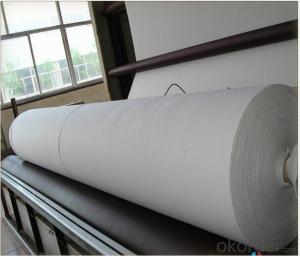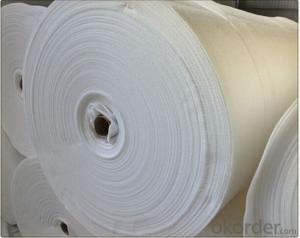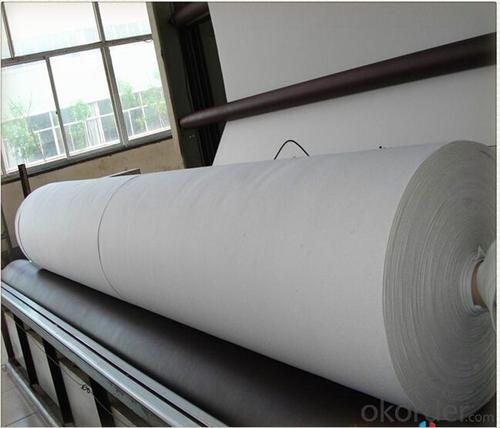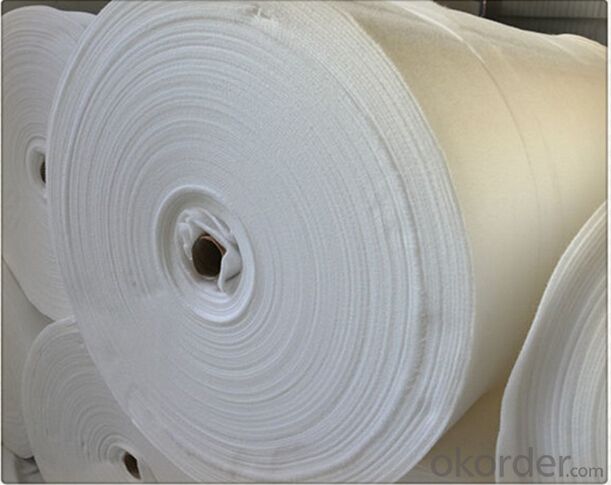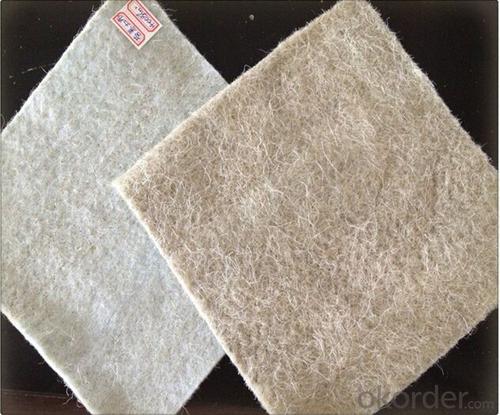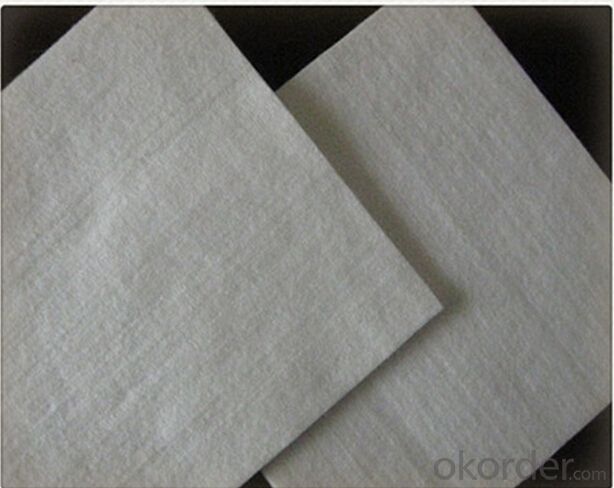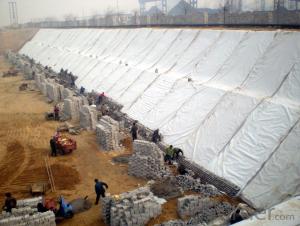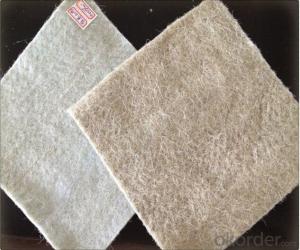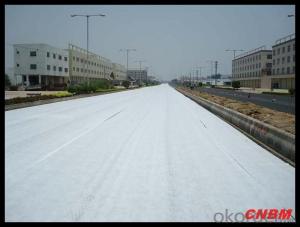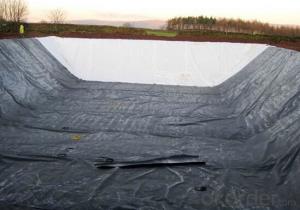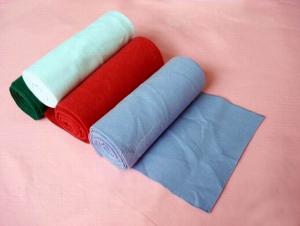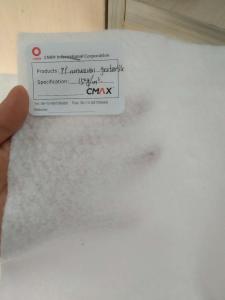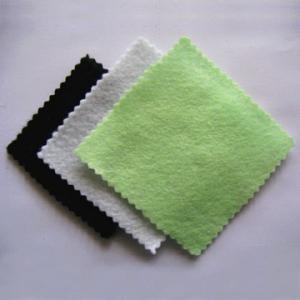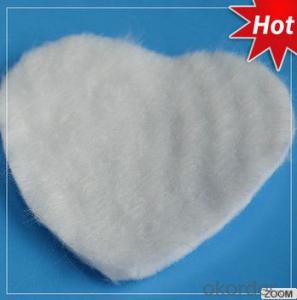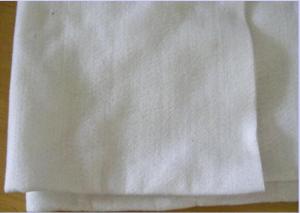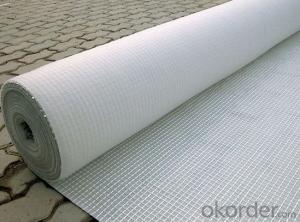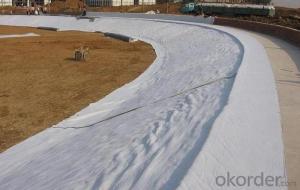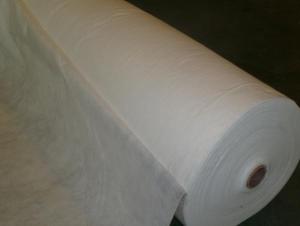200g PP Nonwoven Geotextile for Earthwork Project
- Loading Port:
- Tianjin
- Payment Terms:
- TT or LC
- Min Order Qty:
- 5000 m²
- Supply Capability:
- 2000000 m²/month
OKorder Service Pledge
OKorder Financial Service
You Might Also Like
Polyester Short Fiber Needle Punched Non-woven Geotextile
1. Description of Polyester Nonwoven Geotextile
CMAX polyester non-woven geotextile is made from polyester short fiber by non-woven needle punched manufacturing process, it has isolation, filtration, drainage, reinforcement, protection and maintenance function.
2. Specification of Polyester Nonwoven Geotextile
Weight: 80gsm – 1500gsm.
Width: 1m – 8m; Length: as clients’ required.
3. Technical Data Sheet
Item | Units | Technical Data | |||||||||||
Unit Gram | g/m2 | 100 | 150 | 200 | 250 | 300 | 350 | 400 | 450 | 500 | 600 | 800 | 1000 |
Deviation | % | -8 | -8 | -8 | -8 | -7 | -7 | -7 | -7 | -6 | -6 | -6 | -6 |
Thickness | mm | 0.9 | 1.3 | 1.7 | 2.1 | 2.4 | 2.7 | 3.0 | 3.3 | 3.6 | 4.1 | 5.0 | 5.9 |
Amplitude deviation | % | -0.5 | |||||||||||
Fabric width | m | 2-6m | |||||||||||
Breaking strength | KN/m≥ | 2.5 | 4.5 | 6.5 | 8.0 | 9.5 | 11.0 | 12.5 | 14.0 | 16.0 | 19.0 | 25.0 | 28.0 |
Elongation at break | %≥ | 25-100 | |||||||||||
CBR burting strength | KN≥ | 0.3 | 0.6 | 0.9 | 1.2 | 1.5 | 1.8 | 2.1 | 2.4 | 2.7 | 3.2 | 4.0 | 4.5 |
Equivalent aperture O90(O95) | mm | 0.07-0.2 | |||||||||||
Vertical permeability ceofficient | cm/s | K(10-10) | |||||||||||
Tearing strength | KN≥ | 0.08 | 0.12 | 0.16 | 0.20 | 0.24 | 0.28 | 0.33 | 0.38 | 0.42 | 0.46 | 0.60 | 0.70 |
4. Property of Polyester Nonwoven Geotextile
1) Good flexibility, resistant to corrosion, resistant to acids and alkalis, anti-oxidation
2) Separation, filtration, drainage, reinforcement, protection and maintenance function.
5. Application of Polyester Nonwoven Geotextile
1) Water conservancy project and hydropower project
2) Road paving, railway
3) Airport and port
4) River bank protection and tunnel
5) Environmental protection, etc
PP Nonwoven GEOTEXTILE
1. Description of PP Nonwoven Geotextile
CMAX polypropylene non woven geotextile is made from high strength polypropylene short fiber by non woven needle punched manufacturing process. It has separation, filtration, drainage, reinforcement, protection and maintenance etc. function.
2. Specification of PP Nonwoven Geotextile
Weight: 100gsm – 1200gsm;
Width: 1m – 6m; Length: as clients’ required.
3. Technical Data Sheet of PP Nonwoven Geotextile
Item | Unit | Index | ||||||||
Weight per Square Meter | g/m2 | 100 | 200 | 300 | 400 | 500 | 600 | 800 | 1000 | |
Grab | MD | N | ≥350 | ≥700 | ≥1100 | ≥1400 | ≥1800 | ≥2200 | ≥2800 | ≥3400 |
CD | ≥350 | ≥700 | ≥1100 | ≥1400 | ≥1800 | ≥2200 | ≥2800 | ≥3400 | ||
Elongation | MD | % | 50~90 | 50~100 | ||||||
CD | 50~90 | 50~100 | ||||||||
Trapezoidal Tearing Strength | MD | N | ≥135 | ≥280 | ≥350 | ≥400 | ≥480 | ≥550 | ≥650 | ≥750 |
CD | ≥135 | ≥280 | ≥350 | ≥400 | ≥480 | ≥550 | ≥650 | ≥750 | ||
CBR Mullen Burst Strength KN | KN | ≥1.0 | ≥2.1 | ≥3.2 | ≥3.8 | ≥4.5 | ≥5.5 | ≥6.5 | ≥7.5 | |
Tearing Strength | MD | KN | ≥3.5 | ≥8 | ≥12 | ≥18 | ≥24 | ≥30 | ≥40 | ≥50 |
CD | ≥3.5 | ≥8 | ≥12 | ≥18 | ≥24 | ≥30 | ≥40 | ≥50 | ||
Break Strength | MD | % | 40~65 | 50~80 | ||||||
CD | 40~65 | 50~80 | ||||||||
Puncturing Strength | N | ≥180 | ≥360 | ≥550 | ≥750 | ≥900 | ≥1150 | ≥1450 | ≥2000 | |
Peeling Strength | N/5 cm | ≥80 | ≥100 | |||||||
Antiacid alkali-resistant | % | ≥90% | ||||||||
Seive Size O90 | Mm | ≤0.1 | ||||||||
Vertical Permeability | Cm/s | ≤0.2 | ||||||||
4. Property of PP Nonwoven Geotextile
1).The mechanical values are 2-3 times more than ordinary products.
2).Good acid and alkali resistance, excellent hot melting adhesiveness, high anti-abrasion performance.
5. Application of PP Nonwoven Geotextile
1) Filtration of soils in drainage applications by retaining soil particles while allowing for the free flow of water.
2) Separation and stabilization in road and railway constructions.
3) Prevention of soil movement in erosion control measures.
4) Cushioning and protection in many containment projects.
FAQ
1. Can you send samples to us ?
Yes , free samples could be provided , but customer need pay for the freight cost .
After order placed , the freight charge could be refund .
2. What’s your Payment term ?
T/T , L/C , Western Union,Paypal ...
3. What’s your delivery method ?
By sea , By train , etc
4. What's your MOQ quantity ?
MOQ is one 20'container , the quantity could be negotiable .

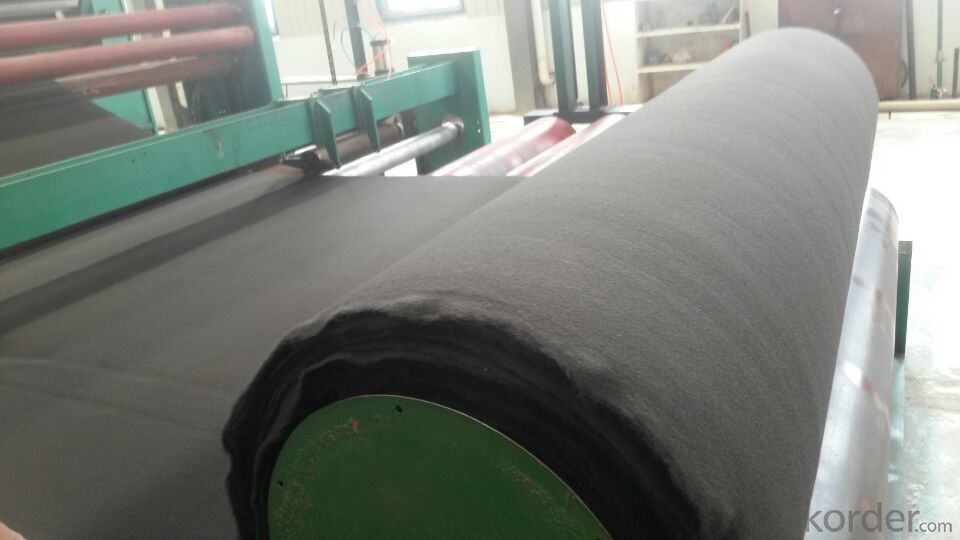
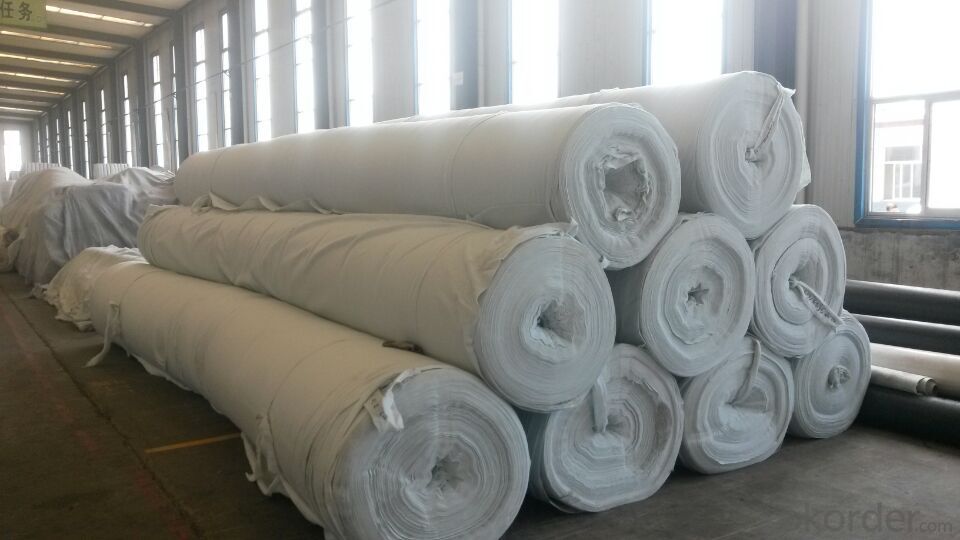
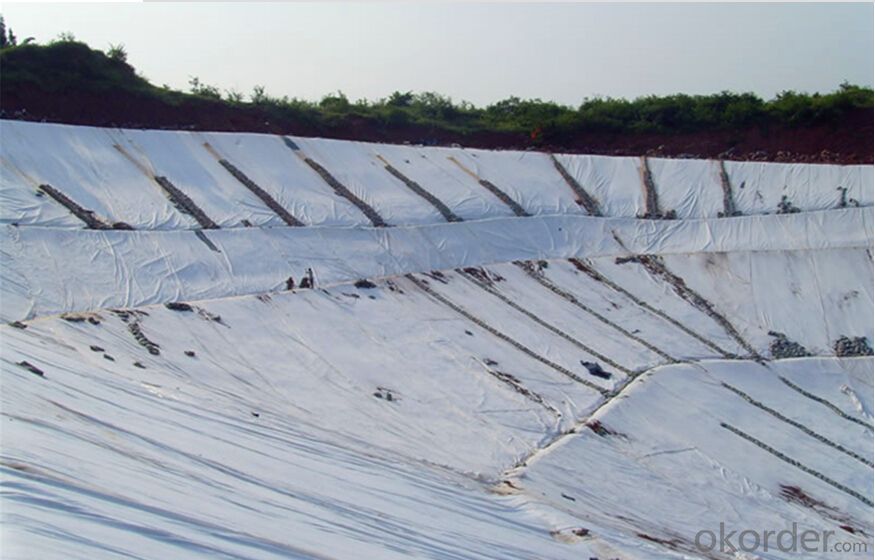
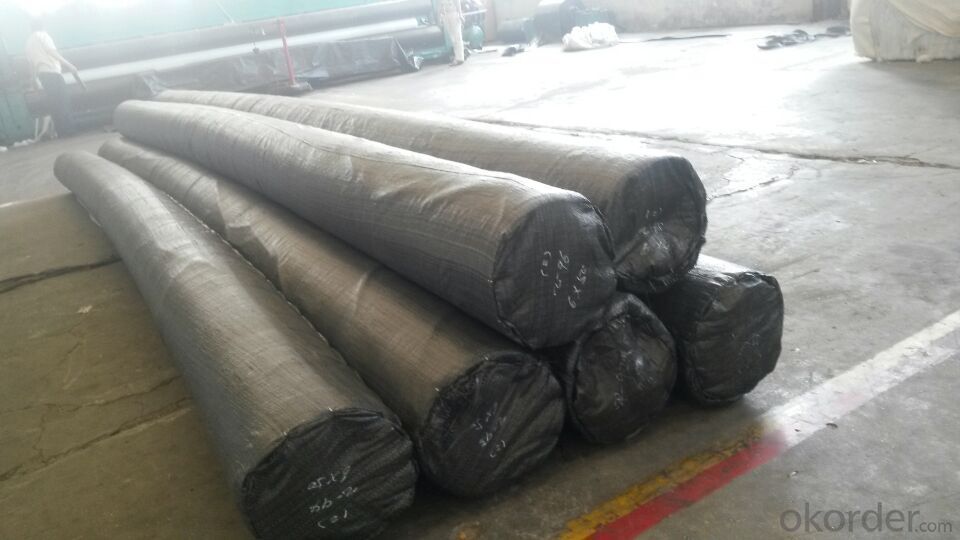
- Q: The difference between short wire geotextile and filament geotextile
- Geotextile is a collectively, he includes filament geotextile, short wire geotextile, woven geotextile, woven geotextile, hot pressed nonwovens. Polyester filament geotextile color is mainly white, green. Gray two categories. The length of the fiber is greater than 4.5 cm. Strong strength is very high. Looks very good distinction.
- Q: How are geotextiles affected by moisture content?
- Geotextiles can be affected by moisture content in several ways. When exposed to excessive moisture, geotextiles can lose their strength and integrity, leading to reduced performance and functionality. Excessive moisture can also cause geotextiles to become clogged or blocked, affecting their ability to drain water and maintain their permeability. Additionally, moisture content can impact the durability and lifespan of geotextiles, as it can contribute to the growth of microorganisms that can degrade the material. Therefore, it is crucial to consider moisture management when using geotextiles in various applications.
- Q: Can geotextiles be used in mine tailings dewatering applications?
- Yes, geotextiles can be used in mine tailings dewatering applications. Geotextiles provide filtration and separation functions, allowing for efficient dewatering of mine tailings by separating solids from liquids. They can help in reducing the moisture content of the tailings, making them easier to handle and manage. Geotextiles also aid in improving the stability and strength of the dewatered tailings, minimizing the risk of slope failures or environmental contamination.
- Q: Are geotextiles resistant to UV degradation?
- Yes, geotextiles are generally resistant to UV degradation. They are designed to withstand exposure to sunlight and other environmental factors, ensuring their durability and longevity in various applications.
- Q: How do geotextiles affect noise pollution?
- Geotextiles can help reduce noise pollution by acting as a sound barrier. They absorb and dampen sound waves, preventing them from traveling through the ground and creating noise pollution.
- Q: Road Central isolation belt (5 m wide) Drainage No design Waterproof geotextile laying and gravel blind ditch, are design flaws?
- Should be it, the general design will have this. If you need to contact me, see the information
- Q: Are geotextiles effective in preventing weed growth?
- Yes, geotextiles are effective in preventing weed growth. These permeable fabrics act as a barrier, preventing sunlight from reaching the soil and providing an effective weed control method.
- Q: Can geotextiles be used in landfill applications?
- Yes, geotextiles can be used in landfill applications. They are commonly used as part of the liner system in landfills to separate and stabilize different layers of soil and prevent the migration of contaminants. Geotextiles help enhance the overall performance and environmental protection of landfills by promoting proper drainage and reducing the potential for erosion.
- Q: How do geotextiles help in reducing the settlement of structures on soft soils?
- Geotextiles help in reducing the settlement of structures on soft soils by providing reinforcement and stabilization. They are placed beneath the foundation of the structure to distribute the load and prevent the soil from excessive compression. The geotextiles act as a barrier, preventing the intermixing of soil particles and maintaining soil structure, which ultimately reduces settlement and improves the overall stability of the structure.
- Q: Can geotextiles be used in geosynthetic clay liner caps?
- Yes, geotextiles can be used in geosynthetic clay liner caps. Geotextiles are often used as a separate protective layer or as a reinforcement in geosynthetic clay liner caps to enhance their performance and provide additional benefits such as filtration, separation, and erosion control.
Send your message to us
200g PP Nonwoven Geotextile for Earthwork Project
- Loading Port:
- Tianjin
- Payment Terms:
- TT or LC
- Min Order Qty:
- 5000 m²
- Supply Capability:
- 2000000 m²/month
OKorder Service Pledge
OKorder Financial Service
Similar products
Hot products
Hot Searches
Related keywords
